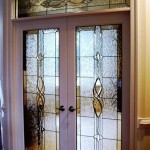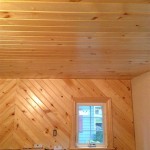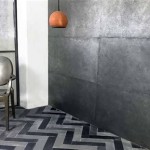```html
Modern Home Interior Ideas: A Guide to Contemporary Living Spaces
Modern home interior design prioritizes clean lines, functionality, and a sense of spaciousness. It's a style that embraces simplicity and often incorporates natural elements to create a comfortable and aesthetically pleasing environment. Successfully integrating modern design principles into a home requires careful consideration of color palettes, furniture selection, and overall layout. This article will explore key ideas and concepts related to modern home interiors, providing a framework for creating a contemporary living space.
Embracing Minimalism and Decluttering
Minimalism is a cornerstone of modern design. This philosophy encourages a focused approach to possessions, advocating for the elimination of unnecessary items to create a cleaner, more organized living space. In practice, this means actively decluttering each room, focusing on only keeping items that are truly essential or bring significant value and joy. Clutter can detract from the clean lines and open feel characteristic of modern design.
Effective decluttering involves several steps. First, assess each item in a room and honestly evaluate its purpose and emotional significance. Items that are broken, unused, or simply take up space should be discarded or donated. Next, consider storage solutions that keep remaining items organized and out of sight. Built-in cabinets, shelving units, and storage ottomans can help maintain a minimalist aesthetic while maximizing available space.
Furthermore, adopting a "one in, one out" rule can help prevent future clutter accumulation. This means that whenever a new item is brought into the home, an existing item must be removed. This simple practice helps maintain a balance and prevents the accumulation of unnecessary possessions.
The benefits of embracing minimalism extend beyond aesthetics. A clutter-free environment can reduce stress, improve focus, and create a more peaceful and relaxing atmosphere. By prioritizing simplicity and functionality, homeowners can transform their living spaces into havens of tranquility.
Color Palette Considerations: Neutral Bases and Strategic Accents
Color plays a crucial role in defining the overall mood and atmosphere of a modern home. Modern interior design typically favors neutral color palettes as a foundation, allowing for the strategic introduction of accent colors to add visual interest and personality. These neutral bases often include shades of white, gray, beige, and cream.
White is a popular choice for walls and ceilings, creating a bright and airy feel. It also provides a blank canvas for showcasing furniture and artwork. Gray offers a more sophisticated and versatile alternative to white, ranging from light, cool grays to darker, warmer tones. Beige and cream provide a sense of warmth and comfort, creating a welcoming atmosphere.
While neutral colors form the foundation, accent colors are essential for adding visual interest and preventing the space from feeling sterile or monotonous. These accent colors can be incorporated through furniture, artwork, textiles, and accessories. Popular accent colors in modern design include blues, greens, yellows, and oranges. However, the specific choice of accent colors should be carefully considered based on personal preferences and the overall desired aesthetic.
When selecting accent colors, consider the color wheel and the relationships between different hues. Complementary colors, which are opposite each other on the color wheel, can create a bold and dynamic contrast. Analogous colors, which are adjacent to each other on the color wheel, can create a more harmonious and cohesive look. The 60-30-10 rule is often applied in interior design. 60% of the room should be a dominant color (often a neutral), 30% should be a secondary color, and 10% should be an accent color.
Moreover, the use of texture can enhance the visual appeal of a neutral color palette. Incorporating different textures, such as wood, metal, glass, and fabric, can add depth and dimension to the space, preventing it from feeling flat or boring.
Furniture Selection: Prioritizing Functionality and Clean Lines
Furniture is a key element in defining the character of a modern home. Modern furniture design emphasizes functionality, clean lines, and a minimalist aesthetic. Pieces are typically simple in form, with a focus on practicality and comfort. The emphasis is on quality craftsmanship and durable materials.
When selecting furniture for a modern home, prioritize pieces that serve a specific purpose and avoid unnecessary embellishments. Sofas and chairs should have clean, straight lines and be upholstered in durable, neutral-colored fabrics. Coffee tables and side tables should be simple and functional, often made of glass, metal, or wood. Dining tables should be sleek and minimalist, with chairs that complement the overall design aesthetic.
Modular furniture is a popular choice in modern design, as it offers flexibility and adaptability. Modular sofas and sectionals can be easily reconfigured to suit different spaces and needs. Similarly, modular shelving units can be customized to provide ample storage without sacrificing style.
Consider the scale of the furniture in relation to the size of the room. Avoid overcrowding the space with too much furniture, as this can detract from the overall sense of spaciousness. Instead, opt for a few well-chosen pieces that are both functional and aesthetically pleasing.
The materials used in furniture construction also play a significant role in defining the modern aesthetic. Wood, metal, glass, and leather are common materials in modern furniture design. Natural wood finishes, such as oak and walnut, can add warmth and texture to the space. Metal accents, such as stainless steel and chrome, can create a sleek and contemporary look. Glass tabletops and shelving units can enhance the sense of openness and transparency.
Lighting: Layering Ambient, Task, and Accent Illumination
Effective lighting is essential for creating a comfortable and functional modern home. Modern lighting design emphasizes layering different types of illumination to create a balanced and well-lit space. This involves incorporating ambient lighting, task lighting, and accent lighting.
Ambient lighting provides overall illumination to a room, creating a general sense of brightness. This can be achieved through recessed lighting, chandeliers, pendant lights, or floor lamps. The goal of ambient lighting is to create a comfortable and inviting atmosphere.
Task lighting provides focused illumination for specific activities, such as reading, cooking, or working. This can be achieved through desk lamps, under-cabinet lighting, or track lighting. Task lighting should be bright enough to provide adequate illumination without causing glare or eye strain.
Accent lighting highlights specific features of a room, such as artwork, architectural details, or decorative objects. This can be achieved through spotlights, wall sconces, or picture lights. Accent lighting adds depth and dimension to the space, creating visual interest.
In modern lighting design, the use of LED lighting is becoming increasingly popular. LED lights are energy-efficient, long-lasting, and available in a wide range of colors and styles. They can be used for ambient, task, and accent lighting, providing a versatile and sustainable lighting solution.
Furthermore, consider the color temperature of the light when selecting light fixtures. Warm light (2700-3000K) creates a cozy and inviting atmosphere, while cool light (4000-5000K) creates a brighter and more energizing atmosphere. The choice of color temperature should be based on the specific function of the room and personal preferences.
Incorporating Natural Elements: Bringing the Outdoors In
Bringing the outdoors in is a key aspect of modern interior design. Incorporating natural elements can create a sense of tranquility and connection to nature, enhancing the overall comfort and well-being of the occupants. This can be achieved through the use of natural materials, plants, and natural light.
Natural materials, such as wood, stone, and bamboo, can add warmth and texture to a modern home. Wood floors, furniture, and accent walls can create a sense of connection to nature. Stone fireplaces and countertops can add a touch of rustic elegance. Bamboo flooring and window coverings are sustainable and eco-friendly choices.
Plants are an excellent way to bring life and color into a modern home. Indoor plants can purify the air, reduce stress, and create a more inviting atmosphere. Choose plants that thrive in indoor environments and require minimal maintenance. Succulents, ferns, and snake plants are popular choices for modern homes.
Maximizing natural light is crucial for creating a bright and airy modern home. Large windows and skylights can allow ample natural light to flood the space. Consider using sheer curtains or blinds to filter the light and provide privacy without blocking the view. Positioning furniture strategically to take advantage of natural light can also enhance the overall brightness of the room.
In conclusion, incorporating natural elements into a modern home can create a more comfortable, inviting, and sustainable living space. By embracing natural materials, plants, and natural light, homeowners can transform their homes into havens of tranquility and connection to nature.
```
Modern Interior Design To Transform Your Space Designcafe

Luxury Modern Interior Design Ideas Authority

Eight Stylish Options For An Interior Design Upgrade To Your Home

10 Best Tips For Creating A Modern Interior Design Designcafe

18 Stylish Homes With Modern Interior Design Architectural Digest

Before After Modern Interior Design For A New Construction Home

5 Lesser Known Home Design Ideas In Singapore Starry Homestead

Modern Interior House Design Ideas You Can Implement Proficiency

15 Latest Interior Design Ideas For Your Home Luxury House Designs Modern Contemporary

Tour This Utah Warm Modern Home Bunch Interior Design Ideas
Related Posts








